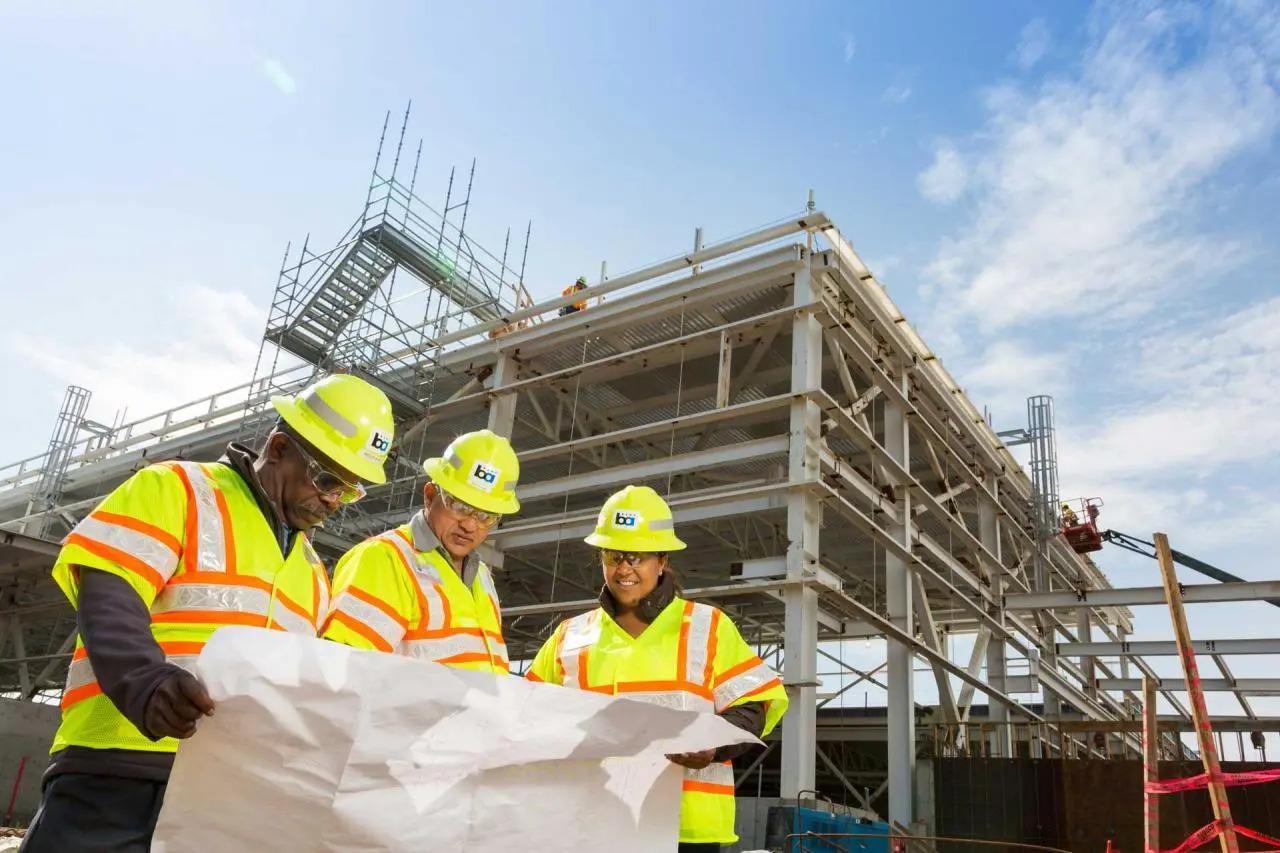Home>diy>Building & Construction>How To Fix The Construction Labor Shortage


Building & Construction
How To Fix The Construction Labor Shortage
Modified: December 7, 2023
Learn effective strategies to address the building construction labor shortage. Discover how to attract and retain skilled workers to keep your projects on track.
(Many of the links in this article redirect to a specific reviewed product. Your purchase of these products through affiliate links helps to generate commission for Storables.com, at no extra cost. Learn more)
Introduction
The construction industry plays a crucial role in building the infrastructure that drives economic growth and societal development. However, the industry is facing a major challenge – a severe shortage of skilled labor. The construction labor shortage has become a pressing issue that requires immediate attention and action.
Understanding the reasons behind this shortage is essential in order to develop effective strategies and solutions. This article will explore the factors contributing to the labor shortage and discuss the impact it has on the construction industry. It will also provide insights into various strategies that can be implemented to attract and retain skilled labor in the construction sector.
Key Takeaways:
- Addressing the construction labor shortage requires investing in training, leveraging technology, improving industry perception, and prioritizing worker well-being. Collaboration with educational institutions is crucial for creating a skilled workforce.
- By implementing comprehensive strategies, the construction industry can attract and retain skilled labor, enhance productivity, and ensure future success. Training, technology, industry image improvement, and collaboration with educational institutions are key to overcoming the labor shortage.
Read more: What Is A Construction Laborer
Understanding the Construction Labor Shortage
The construction labor shortage refers to the significant gap between the demand for skilled construction workers and the available workforce. This shortage can be attributed to a combination of demographic factors, industry changes, and socioeconomic influences.
One key factor contributing to the labor shortage is the aging workforce. Many skilled construction workers are retiring, creating a void that is not being adequately filled by new entrants to the industry. Additionally, there has been a decline in interest from younger generations in pursuing careers in construction, resulting in a lack of new talent entering the field.
Another factor is the impact of the economic recession on the construction industry. During the recession, many workers were laid off or left the industry due to lack of job opportunities. As the economy recovered and construction activity ramped up, there was a shortage of skilled workers to meet the increased demand.
Furthermore, the construction industry has historically faced challenges in attracting diverse talent. There has been limited representation of women, racial and ethnic minorities, and individuals from disadvantaged backgrounds. This lack of diversity limits the pool of potential workers and contributes to the overall labor shortage.
Technological advancements and the introduction of automation have also had an impact on the labor shortage. While these advancements can streamline processes and increase productivity, they require workers with specialized skills to operate and maintain the technology. The shortage of workers with these skills further exacerbates the labor shortage.
Understanding the causes and implications of the construction labor shortage is crucial for developing effective solutions. By addressing these underlying factors, the industry can take steps to attract and retain skilled labor, ensuring the continued growth and success of the construction sector.
Factors Contributing to the Labor Shortage
Several key factors contribute to the construction labor shortage, making it a complex issue that requires a multifaceted approach to address. These factors include:
- Demographic shifts: The construction industry is experiencing a significant demographic shift as older workers retire and younger generations show less interest in pursuing careers in construction. This leads to a shortage of skilled workers to meet the industry’s demands.
- Lack of education and training: The lack of comprehensive education and training programs for construction trades has hindered the development of new talent. Many schools have shifted their focus away from vocational programs, leading to a decrease in the number of individuals entering the industry.
- Economic fluctuations: The construction industry is heavily influenced by economic cycles. During periods of economic recession, construction projects decrease, leading to layoffs and a decrease in skilled labor. As the economy recovers, the industry struggles to meet the increasing demand for construction workers.
- Industry image and perception: Construction work is often perceived as physically demanding, dangerous, and lacking in long-term career prospects. This negative perception deters individuals from considering careers in construction, further exacerbating the labor shortage.
- Immigration policy changes: Changes in immigration policies can impact the availability of foreign-born workers who contribute significantly to the construction industry’s workforce. Restrictions on immigration can lead to a decrease in the number of skilled workers available to fill the labor gap.
- Rapid technological advancements: As the construction industry embraces technological advancements like automation and digitalization, the demand for workers with specialized skills increases. The shortage of workers with these skills poses a challenge in meeting the industry’s evolving needs.
Understanding the factors contributing to the labor shortage is essential for devising effective solutions. By addressing these issues, the industry can work towards attracting and retaining skilled labor, ensuring a sustainable and vibrant future for the construction sector.
Impact of the Labor Shortage on the Construction Industry
The labor shortage in the construction industry has far-reaching implications that affect various aspects of the industry, including project timelines, costs, quality, and overall productivity. The impact of the labor shortage can be summarized as follows:
- Delayed project timelines: With a shortage of skilled workers, construction projects often face delays in completion. This not only inconveniences clients but also has a ripple effect on other projects that are dependent on the timely completion of preceding ones.
- Increased labor costs: When the demand for skilled labor exceeds the supply, wages tend to increase. Construction companies may need to offer higher wages and benefits to attract and retain workers, resulting in increased labor costs for projects.
- Quality and craftsmanship concerns: The shortage of skilled workers can lead to a decrease in the quality of workmanship. With a limited number of experienced craftsmen, there is a higher risk of errors, rework, and subpar construction standards, which can ultimately affect the durability and safety of the built environment.
- Lower productivity: A shortage of skilled workers can hamper productivity on construction sites. With fewer workers, tasks take longer to complete, causing inefficiencies and delays in project schedules. This ultimately limits the industry’s ability to meet the growing demand for construction projects.
- Innovation and growth limitations: The labor shortage poses challenges for innovation and growth in the construction industry. With limited manpower, companies may be less inclined to invest in research and development or adopt new technologies, hindering progress and stifling advancements in construction practices.
- Limited capacity for expansion: Construction companies often face difficulties in expanding their operations due to a lack of skilled labor. The inability to expand hampers the industry’s ability to meet the increasing demands for new infrastructure, residential housing, and commercial projects.
The labor shortage in the construction industry requires proactive measures to mitigate its impact. By implementing strategies to attract and retain skilled labor, the industry can overcome these challenges, improve productivity, and ensure the successful completion of projects while maintaining high-quality construction standards.
Strategies for Attracting and Retaining Skilled Labor
To address the construction labor shortage, implementing effective strategies is essential for attracting and retaining skilled workers. Here are several strategies that can be employed:
- Investing in training and apprenticeship programs: To bridge the skills gap, construction companies should invest in comprehensive training and apprenticeship programs. These programs provide hands-on experience and mentorship, equipping workers with the necessary skills to thrive in the industry.
- Leveraging technology to increase efficiency and productivity: Embracing technological advancements, such as construction management software, Building Information Modeling (BIM), and prefabrication, can help increase efficiency and productivity on job sites. This reduces the dependency on manual labor and attracts tech-savvy workers to the industry.
- Improving industry image and perception: Efforts should be made to reshape the industry’s image to attract a diverse range of individuals. Highlighting the rewarding career opportunities, competitive salaries, and the use of advanced technology can help change public perception and encourage more people to consider careers in construction.
- Enhancing job site conditions and work-life balance: Creating a safe and inclusive work environment, offering competitive compensation packages, and promoting work-life balance are crucial in attracting and retaining skilled workers. Improving job site conditions, providing adequate breaks, and fostering a supportive work culture will help attract and retain workers in the long run.
- Collaboration with educational institutions and workforce development programs: Building strong partnerships with vocational schools, colleges, and workforce development programs can help attract more individuals to the construction industry. Supporting these institutions through funding, internships, and mentorship programs will create a pipeline of skilled workers for the future.
By implementing these strategies collectively, the construction industry can improve its chances of attracting and retaining skilled labor. It is crucial for construction companies, industry associations, and government bodies to collaborate and invest in the necessary resources to address the labor shortage effectively.
Investing in Training and Apprenticeship Programs
Investing in comprehensive training and apprenticeship programs is a key strategy for addressing the construction labor shortage. These programs play a crucial role in bridging the skills gap and attracting individuals to pursue careers in the construction industry. Here are some reasons why investing in training and apprenticeship programs is crucial:
- Developing skilled workers: Training and apprenticeship programs provide hands-on experience and specialized knowledge to individuals entering the construction industry. Through these programs, participants learn essential skills and techniques under the guidance of experienced mentors, ensuring they acquire the necessary expertise to excel in their respective trades.
- Creating career pathways: Training and apprenticeship programs offer structured career pathways within the construction industry. By providing clear progression opportunities, these programs give individuals a sense of purpose and direction, making the industry more appealing to young people and career switchers.
- Promoting industry standards and best practices: Training and apprenticeship programs ensure that workers are trained in accordance with industry standards and best practices. This helps maintain high-quality workmanship, reduces errors and costly rework, and enhances the overall reputation of the construction industry.
- Incorporating emerging technologies: Training programs can equip workers with the skills needed to embrace and utilize emerging technologies in construction. This includes training on construction management software, Building Information Modeling (BIM), and other digital tools that increase efficiency and productivity on job sites.
- Fostering a culture of learning and growth: By investing in training and apprenticeship programs, construction companies demonstrate their commitment to employee development. This creates a positive work culture that values continuous learning and growth, attracting and retaining talented individuals who are seeking long-term career opportunities.
To effectively implement training and apprenticeship programs, collaboration is key. Construction companies can collaborate with vocational schools, community colleges, and industry associations to develop robust curriculum and provide practical training opportunities. Government support, such as funding and incentives for businesses participating in apprenticeship programs, can also play a crucial role in encouraging investment in workforce development.
By investing in training and apprenticeship programs, the construction industry can develop a skilled and motivated workforce, addressing the labor shortage while simultaneously ensuring high standards of quality and safety. This proactive approach not only benefits individual workers but also strengthens the industry’s long-term viability and success.
Consider offering competitive wages and benefits to attract and retain skilled construction workers. Providing training and development opportunities can also help address the labor shortage in the construction industry.
Leveraging Technology to Increase Efficiency and Productivity
In today’s digital age, leveraging technology is crucial for the construction industry to address the labor shortage and improve overall efficiency and productivity. By embracing innovative technologies and incorporating them into construction processes, companies can streamline operations, optimize resource allocation, and attract tech-savvy workers. Here are some key ways that technology can be leveraged:
- Construction Management Software: Implementing construction management software allows for better project planning, scheduling, and tracking. These software solutions provide real-time visibility into project progress, facilitate communication between teams, and centralize data, leading to improved project coordination and enhanced productivity.
- Building Information Modeling (BIM): BIM is a collaborative design and planning process that uses 3D models to visualize and simulate construction projects. By utilizing BIM software, construction professionals can identify potential clashes, optimize layouts, and improve construction sequencing, resulting in more efficient and error-free construction processes.
- Prefabrication and Modular Construction: Prefabrication, which involves constructing building components offsite, and modular construction, where complete units are built in a factory and assembled onsite, can significantly reduce onsite labor requirements. By leveraging these methods, construction projects can be completed faster, with fewer workers needed on the job site.
- Drones and Robotics: Drones can be used for site inspections, surveying, and monitoring construction progress. They provide a cost-effective and efficient way to gather data and improve job site safety. Robotics and autonomous construction equipment can also perform repetitive or physically demanding tasks, reducing the labor-intensive nature of certain construction activities.
- Mobile and Cloud Technology: The use of mobile and cloud technology enables real-time collaboration and communication on construction sites. Workers can access project plans, specifications, and information from their mobile devices, eliminating the need for physical documents and enabling instant updates and sharing of data.
By leveraging technology, construction companies can increase productivity, reduce reliance on manual labor, and attract a new generation of workers who are technologically proficient. However, it is crucial for companies to invest in training programs and provide ongoing support to ensure workers are comfortable and adept at using these technologies.
Furthermore, fostering a culture of innovation and embracing the potential of technology is vital for sustained success. Industry associations and trade groups can play a role in facilitating knowledge sharing and promoting the adoption of technology within the construction industry.
Leveraging technology is not only a means to address the labor shortage but also a way to optimize construction processes, improve project outcomes, and embrace the opportunities that the digital era offers. By harnessing the power of technology, the construction industry can thrive in the face of challenges and pave the way for a more efficient and productive future.
Improving Industry Image and Perception
The construction industry faces a perception challenge that hinders its ability to attract and retain skilled labor. To address the labor shortage, it is crucial to improve the industry’s image and perception. By showcasing the rewarding opportunities, advancements, and positive impacts of a construction career, companies can change public perception and make construction an attractive choice for potential workers. Here are some strategies for achieving this:
- Highlighting career opportunities: Many people hold the misconception that construction only offers low-paying, temporary jobs. By showcasing the range of rewarding and stable career opportunities within the industry, such as project management, safety management, and sustainable construction, companies can attract a wider pool of talent.
- Communicating advancements and innovation: The construction industry has made significant advancements in technology, sustainability, and safety practices. By communicating these advancements through various channels, such as social media, industry publications, and career events, companies can change the perception of construction as a traditional and outdated industry.
- Sharing success stories: Highlighting success stories of individuals who have built fulfilling careers in construction can inspire others. By showcasing diverse role models and their accomplishments, companies can demonstrate the potential for growth, personal development, and job satisfaction within the industry.
- Emphasizing social impact and community involvement: Construction projects have a significant impact on communities by creating infrastructure, housing, and public spaces. By emphasizing the positive contribution of construction to local communities, companies can attract individuals who value making a difference and leaving a lasting impact.
- Promoting diversity and inclusion: The construction industry has traditionally lacked diversity. By actively promoting diversity and inclusion and showcasing examples of successful women, minorities, and individuals from diverse backgrounds, companies can create an inclusive environment that appeals to a broader range of candidates.
Industry associations, construction companies, and educational institutions should collaborate to promote the industry and educate the public about the diverse range of career opportunities and the positive impact the construction sector has on society. This can include organizing industry events, offering mentorship programs, and providing accurate information about training and development pathways.
Changing the industry’s image and perception requires a coordinated and sustained effort. By showcasing the opportunities, advancements, and positive impacts of the construction industry, companies can attract skilled workers, foster a positive work culture, and ensure the future growth and success of the industry.
Enhancing Job Site Conditions and Work-Life Balance
Job site conditions and work-life balance play a crucial role in attracting and retaining skilled labor in the construction industry. Creating a positive work environment, prioritizing safety, and promoting work-life balance are essential strategies for addressing the labor shortage. Here are some approaches to enhancing job site conditions and work-life balance:
- Ensuring a safe and healthy work environment: Construction companies must prioritize the safety and well-being of workers. This includes implementing rigorous safety protocols, providing proper personal protective equipment (PPE), and conducting regular safety training sessions. Additionally, creating a culture of safety awareness and accountability is vital to establish a positive work environment.
- Implementing fair compensation and benefits: Offering competitive wages and benefits is essential for attracting and retaining skilled workers. This not only includes providing a fair base salary but also offering health insurance, retirement plans, paid time off, and other employee benefits that positively impact work-life balance.
- Promoting work-life balance: Recognizing the importance of work-life balance is crucial for employee satisfaction and retention. Companies can do this by implementing flexible work schedules, providing opportunities for telecommuting or remote work, and offering employee assistance programs that support mental health and overall well-being.
- Emphasizing employee recognition and professional development: Acknowledging and rewarding employee contributions can foster a positive work culture and improve job satisfaction. Constructive feedback, career advancement opportunities, and access to professional development programs can motivate workers to stay within the industry and enhance their skills.
- Improving work conditions and amenities: Enhancing job site conditions by providing comfortable rest areas, clean facilities, and appropriate break areas can significantly improve workers’ physical and mental well-being. Access to amenities such as onsite gyms, wellness programs, and healthy food options can further contribute to a positive work environment.
Construction companies should prioritize the health, safety, and overall well-being of their workforce. This can lead to higher job satisfaction, increased productivity, and improved retention rates. Additionally, fostering open communication channels between employees and management creates an environment where workers feel heard and valued.
By enhancing job site conditions, providing work-life balance initiatives, and creating a supportive work culture, construction companies can attract and retain skilled workers. This not only helps address the labor shortage but also promotes a positive industry image and contributes to the long-term success of the construction sector.
Read more: How To Calculate Construction Labor Cost
Collaboration with Educational Institutions and Workforce Development Programs
Collaboration between the construction industry and educational institutions/workforce development programs is crucial for addressing the labor shortage and creating a pipeline of skilled workers. By working together, industry professionals and educators can bridge the skills gap, attract new talent, and ensure the continued growth and success of the construction sector. Here are some key aspects of this collaboration:
- Partnerships with vocational schools and community colleges: Building strong partnerships with vocational schools and community colleges is vital for attracting individuals to the construction industry. This can involve providing internships, apprenticeships, and mentorship opportunities, as well as offering input on curriculum development to align educational programs with industry needs.
- Supporting and promoting trade programs: Construction companies can lend support by providing financial assistance, equipment donations, and guest lecturers to trade programs. This helps enhance the quality of education and encourages students to consider careers in the industry.
- Establishing apprenticeship programs: Collaborating with educational institutions and workforce development programs to create apprenticeship programs is an effective way to train and develop new talent. These programs combine classroom instruction with on-the-job training, allowing individuals to gain practical experience while earning a wage.
- Mentorship and professional development opportunities: Construction companies can partner with educational institutions to facilitate mentorship programs, where experienced professionals guide and inspire aspiring construction workers. Additionally, offering professional development opportunities such as workshops, seminars, and certifications can help individuals enhance their skills and advance in their careers.
- Providing scholarships and financial incentives: Offering scholarships and financial incentives to students pursuing construction-related education can encourage more individuals to enter the field. This support helps alleviate the financial burden of education and attracts motivated students who may not have considered a career in construction otherwise.
Government bodies can also play a role in this collaboration by providing funding and incentives for educational institutions and promoting partnerships between academia and the construction industry. This support enables the development of industry-relevant programs and ensures a steady supply of skilled workers.
By fostering collaboration between the construction industry and educational institutions/workforce development programs, the industry can actively address the labor shortage. This partnership helps attract and train new talent, close the skills gap, and create a sustainable pipeline of skilled workers who are equipped to meet the evolving needs of the construction sector.
Conclusion
The construction industry is currently facing a significant labor shortage, posing challenges to project timelines, costs, and overall productivity. To address this shortage, it is crucial to implement various strategies that attract and retain skilled labor. By investing in training and apprenticeship programs, leveraging technology, improving industry perception, enhancing job site conditions and work-life balance, and collaborating with educational institutions and workforce development programs, the construction industry can overcome the labor shortage and ensure future success.
Training and apprenticeship programs play a key role in developing skilled workers and creating career pathways within the construction industry. These programs provide hands-on experience, promote industry standards, and equip workers with the necessary skills to thrive in the field.
Leveraging technology, such as construction management software, BIM, and drones, increases efficiency and productivity on job sites, reducing reliance on manual labor and attracting tech-savvy workers. Embracing innovation and showcasing the industry’s advancements can change the public perception of construction, making it a more appealing career choice.
Improving job site conditions, prioritizing safety, promoting work-life balance, and providing fair compensation and benefits are essential to attract and retain skilled labor. Creating a positive work culture and supporting employee growth and recognition contribute to job satisfaction and retention.
Collaboration between the construction industry and educational institutions/workforce development programs is crucial. Partnerships with vocational schools and community colleges, apprenticeship programs, and mentorship opportunities help bridge the skills gap and provide a pathway for individuals to enter the construction industry. Financial incentives, scholarships, and support for trade programs can attract motivated individuals and alleviate financial burdens.
In conclusion, the construction labor shortage can be effectively addressed through a combination of these strategies. By taking a comprehensive and collaborative approach, the industry can attract and retain skilled labor, enhance productivity, and ensure the continued growth and success of the construction sector. With these efforts, the industry can overcome the challenges posed by the labor shortage and build a solid foundation for the future.
Frequently Asked Questions about How To Fix The Construction Labor Shortage
Was this page helpful?
At Storables.com, we guarantee accurate and reliable information. Our content, validated by Expert Board Contributors, is crafted following stringent Editorial Policies. We're committed to providing you with well-researched, expert-backed insights for all your informational needs.














0 thoughts on “How To Fix The Construction Labor Shortage”